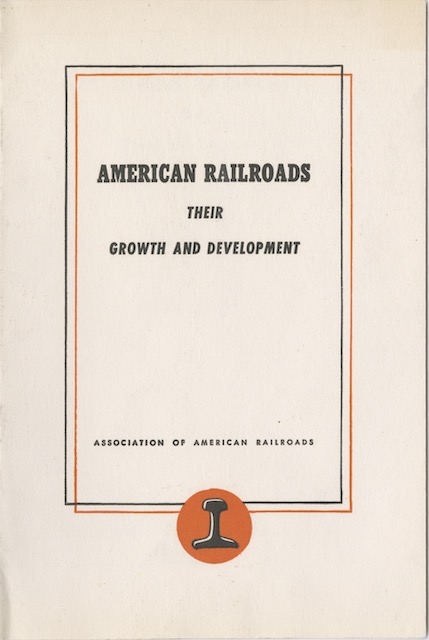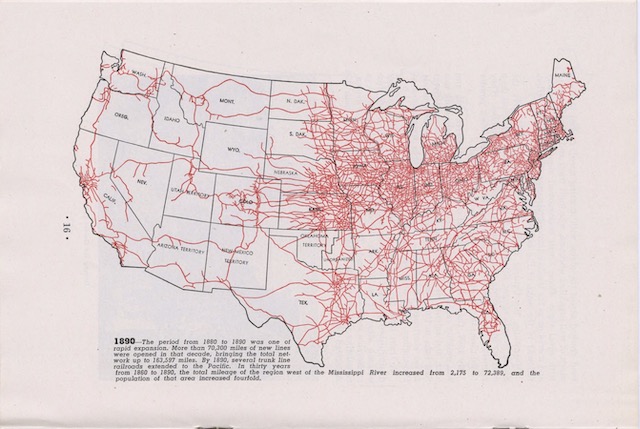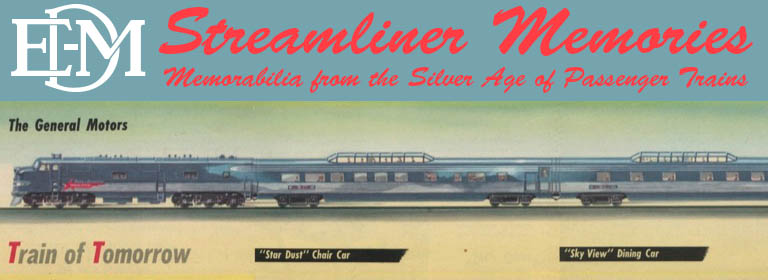We’ve previously seen a 1958 edition of this booklet; today’s is from 1950. The Association of American Railroads apparently put out an updated version every year, or almost every year, between 1950 and 1960 or so.
 Click image to download a 7.6-MB PDF of this 36-page booklet.
Click image to download a 7.6-MB PDF of this 36-page booklet.
The text in the booklets remained about the same. The booklets also contained a series of maps showing the extent of railway lines by decade from 1830 to 1890 plus the year of (or the year before) the booklet.
 Though a few key lines were missing, U.S. railroads were almost fully built out by 1890. This was followed by a period of consolidation as railroads extended their reach by merging with others rather than by building new track.
Though a few key lines were missing, U.S. railroads were almost fully built out by 1890. This was followed by a period of consolidation as railroads extended their reach by merging with others rather than by building new track.
Many of the photos in this series of booklets varied from year to year. Despite this, some of them were surprisingly out of date. For example, this 1950 edition contains a collage of 33 photos “streamlined engines of today.” In fact, while a few E and F units are shown, many of the engines in the photos were from the 1930s and many of those had been scrapped or at least withdrawn from service well before 1950.

This reminds me of a WWII era booklet by the AAR which showed how modern railroads served the country and aided the war effort. Shown were troop movements in heavyweight passenger coaches and sleepers, coaling and watering operations, classification yards, signals, switch towers with both manual levers and modern electrically operated switches, icing of refrigerator cars, stock cars, loading and unloading freight, servicing locomotives in roundhouses, dispatching with telegraph keys, and so much more.
My elementary school had a big stack of them in a classroom, and of course I couldn’t resist taking one home, where I devoured it. A skillful artist had retouched every locomotive tender, passenger car, and freight car so there were only two “railroads” represented: the North South and the East West.
I learned all about 1940s railroading from the AAR and those fictional railroads. Of course, similar to how they did in this booklet, not only did they portray railroads as good citizens helping the war effort, but they talked a lot about the virtues of private ownership, and how much railroads paid in federal, state, and local taxes.